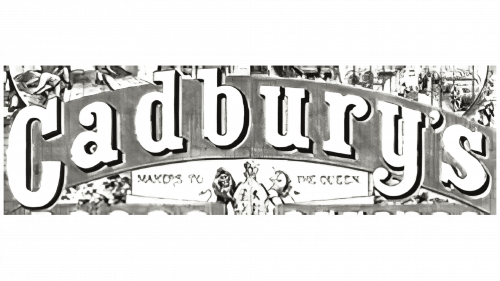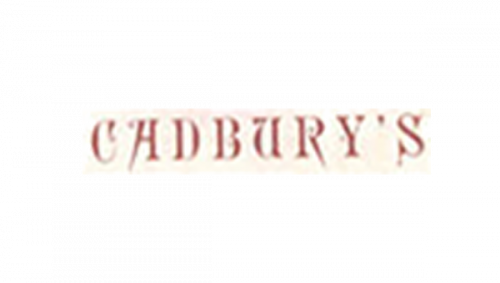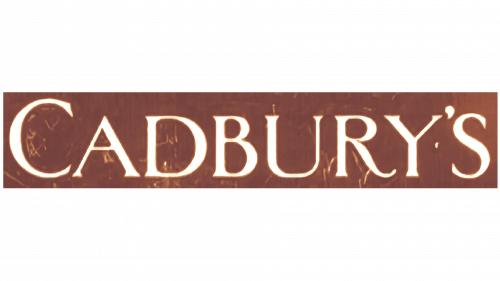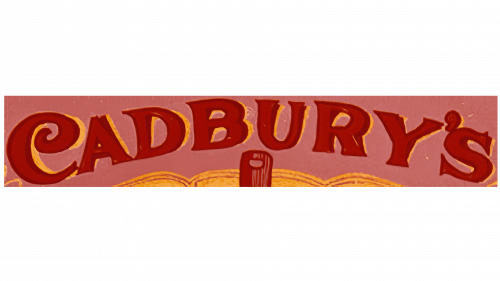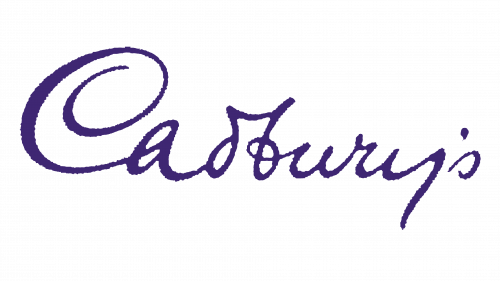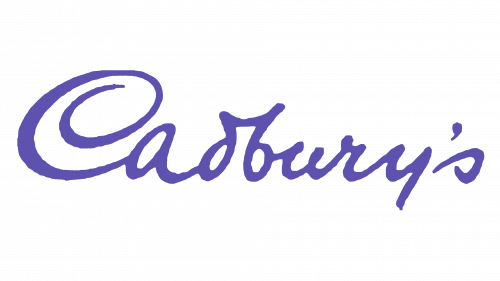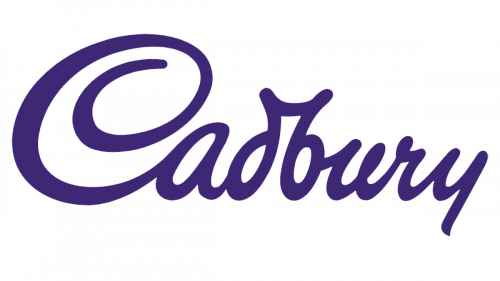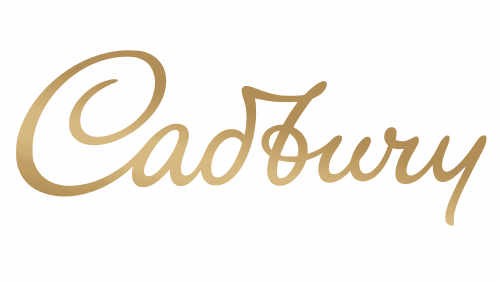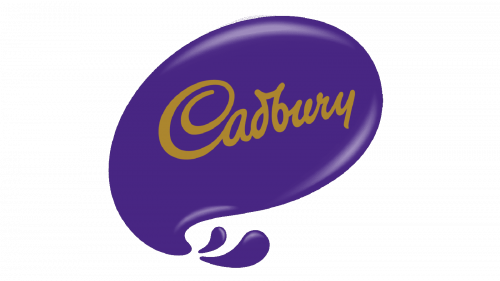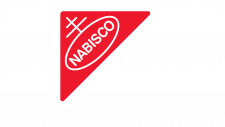Cadbury Logo
Cadbury is a British business with nearly 200 years of history. Established in 1824, the company provides chocolate lovers with high quality products, made according to perennial traditions from the best ingredients. Making chocolate, the company has developed hundreds of tastes and types of the product, taking in sight cross-cultural differences and customers’ desires.
Meaning and history
John Cadbury was a Birmingham businessman, trading tea, coffee and chocolate. Partnering with the brother in 1824, he has started a company manufacturing and selling these products, as well as cocoa. His bar brand was made in 1849 to compete with other manufacturers in the city. Their
His sons Richard and George succeeded the business. At the time, they faced financial struggles of the business and a loss of employees. Trying to solve this, they had added more chocolate in the products line, improved the workers’ conditions, and worked on the products quality. This process continued in the following years, and by the beginning of the 20th century, chocolate became the best-selling product of their company.
The company made it through the WWI, providing chocolate to the army. In 1919, Cadbury united with J.S. Fry & Sons, another chocolate leader. They added nuts, fruits, and crèmes in the product line at this time.
In 1969, Schweppes joined forces with Cadbury. This union has finished the family traditions of Cadbury, as Lord Watkinson, the Schweppes leader, got a position of the chairman, while Adrian Cadbury became his deputy and the CEO.
What is Cadbury?
Cadbury is a British company, based in London. It’s best known for high quality chocolate and related products, made of the best ingredients via first class equipment. The company has a 200-year history, throughout which it became the largest and most iconic chocolate manufacturer.
1824 – 1866
Before 1905, the business didn’t have any logotype. They put their nameplates in the ad blocks of gazettes. In the first decades, they were using the ‘Cadbury’s’ inscription with large letters. The first ‘c’ was uppercase and had elongated tails. The ‘a’,’y’, and ‘r’ had small curls at the tips, alongside prominent serifs. Finally, the serif characters ‘d’,’b’, and ‘u’ were equipped with small outshots at the ends. The word was placed in a rounded bar, ornamented with multiple elements coming alongside.
1866
The logo from 1866 carries a vintage aesthetic, with “Cadbury’s” set in an elegant serif typeface. The letters are etched with ornate detailing, reflecting the time period’s preference for intricate designs. The text color is a muted red with shadowing, giving it a three-dimensional appearance on the textured cream background. This historical logo conveys a sense of craftsmanship and the artisanal quality of the chocolate, appealing to the consumer’s sense of nostalgia and luxury.
1866 – 1879
The major redesign took place in the 60s. It showed another typeface with all characters uppercase, but the first ‘c’ enlarged. Slim lines were used to write the word. The ‘r’ had a long lower tail with an elegant curl at the end. The characters had received very small serifs. This inscription was often accompanied by a brown background.
1876 – 1905
A more cursive style showed up with a new inscription. It had the first ‘c’ enlarged and equipped with a prominent serif at the upper end. The following ‘a’ had a custom style, while the ‘y’ was rounded at the lower tip. All letters weren’t set up in a single straight line, and the first ‘c’ was lower than the following symbols.
1900
The 1900 lettering had a handwritten typeface with prominent serifs. All letters were uppercase, and they had very bold lines. The first ‘c’ had also gotten its upper tail rounded.
1905 – 1955
The first official logotype was introduced with the new century. The redesign showed a cocoa tree with the leaves styled as multiple bolder or softer circles and other shapes. A thin trunk incorporated a curly ‘y’ symbol inside it. To the left, the designer wrote the rest of the name in a custom bold typeface. Below the whole inscription, they placed the ‘Cadbury Brothers, Limited’ lettering, whereas the first word was uppercase.
Here’s how it was invented: a famous brand designer and typewriter George Auriol had got an invitation from then-leader of the company named William Cadbury. William wanted to create a special logotype, featuring both the traditions and the customs of the company. And after a series of attempts, George came up with a solution.
1921 – 1960
Alongside the 1905 logo, Cadbury another inscription. It hadn’t played a role of the logotype only, rather it was also an autograph of the owner himself. Cadbury Company put William’s handwritten surname on the products periodically in the first half of the century. There were two versions of this logo: with the ‘s’ apostrophe at the end and without.
1960
The logo, which appears to be from around 1960, shows the brand name “Cadbury’s” in a cursive, flowing script that exudes a sense of indulgence and richness. The color has shifted to a deep, royal purple—a hue long associated with the Cadbury brand and indicative of quality and luxury. The script is more fluid than the first logo, suggesting the smoothness and creamy texture that Cadbury chocolate is known for. The background is omitted, focusing all attention on the brand name, which now becomes a standalone symbol of the company’s identity.
1960 – 1985
This logotype also went in two color variants: a darker pink and a brighter one. The brighter inscription was also made a little bit bolder and put in a single horizontal line, to make it more readable.
1985 – 2021
This trouble with reading was solved completely in 1985. The font hadn’t received any dramatic changes, but the letters were grouped and made bolder. However, the new wordmark wasn’t that catching as the previous signatures. So the designers returned them to the modern epoque.
2003 – 2021
This logo, from 2003, modernizes the previous design, opting for a cleaner and more contemporary look while retaining the iconic script and purple color. The “Cadbury” script is streamlined, removing the apostrophe and ‘s,’ which simplifies the brand name for a modern audience. This iteration is sleeker and more adaptable for digital platforms, packaging, and marketing materials. The deep purple remains, ensuring continuity and brand recognition, but the overall feel is less ornate and more accessible, reflecting the evolution of brand design from the elaborate to the more minimalist.
2020 – today
The latter name caption has returned to the original 1921 variant, but the company’s marketers added a new color code, making it look more distinctive and rich than before.
Color
This wordmark is colored gradient beige and white. Sometimes, this inscription is based over a dark violet background, which highlights the company’s name as good as the unusual color. Previously, however, they used simpler black and white, or blue/violet and white codes to write the nameplates.
Font
Their nameplate’s typeface consists of handwritten wavy lines, connected to one another. No wonder, because it’s actually a personal signature of William Cadbury, the company owner in the 1920s.


